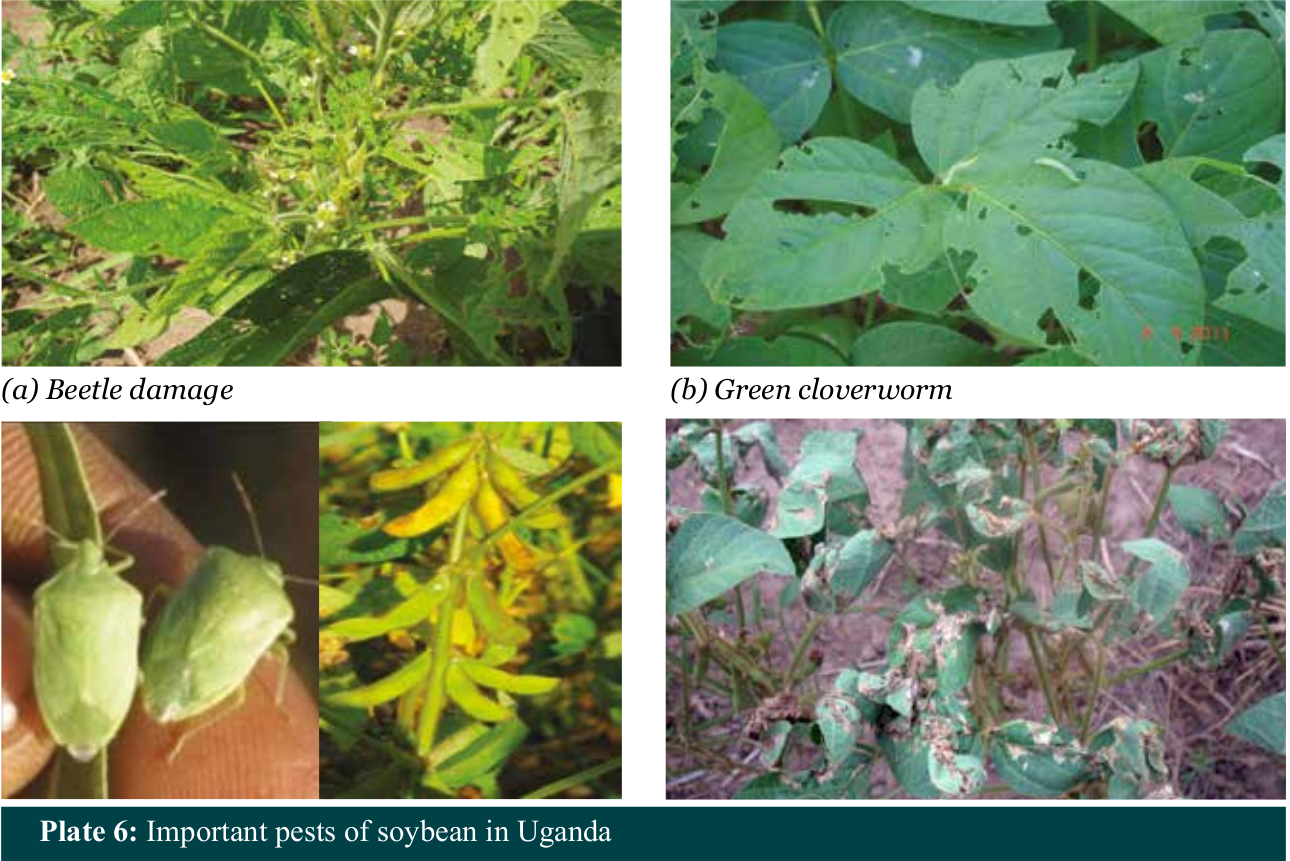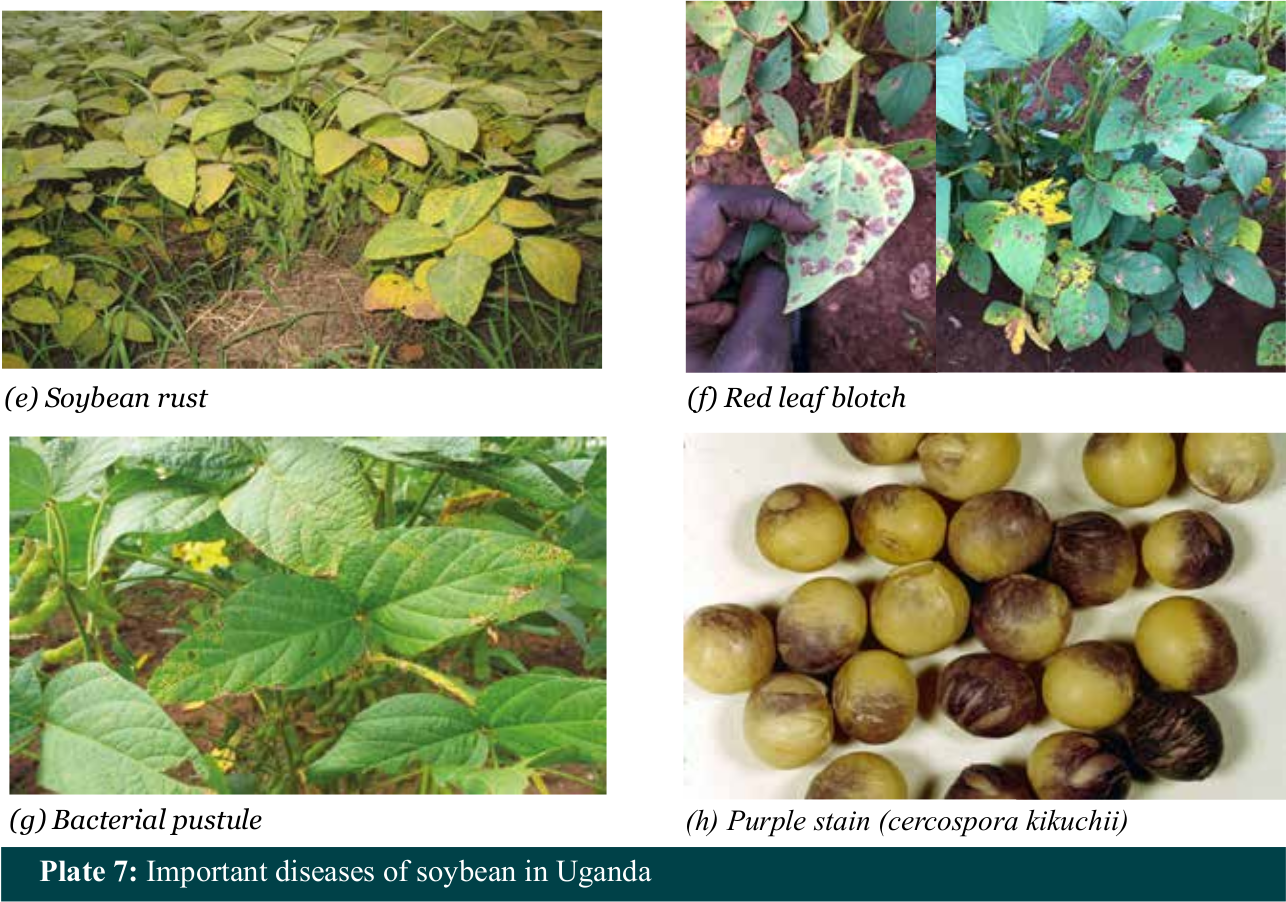Production constraints
Soybean production constraints
Soybean is faced with a number of production constraints (i.e. abiotic and biotic) that greatly affect yields. Although pests and diseases should be immediately controlled with recommended agrochemicals once observed in the field, the use of resistant varieties is the most cost-effective and recommended management strategy because it is environmentally safe.
Soybean suffers attacks from several pests and diseases that occur over a wide range of conditions and plant growth stages. Common biotic constraints to soybean production include pests like groundnut leaf miners (webworms), bean leaf beetles, green clover worms and stink bugs. However, lately we have observed bruchids attacking soybean seed during storage. Diseases like soybean rust, bacterial pustule, root rots, mosaic virus, frog eye leaf spot, red leaf blotch, downy mildew, and nematodes among others also affect soybean productivity. Amongst these, soybean rust is the most economically significant constraint.
It is very important for growers and extension agents to have an enhanced capacity to detect and identify soybean diseases especially in scenarios where symptoms of several diseases co-exist in the same field. Moreover, accurate identification of pathogen is very difficult if the infected plants are already dead. When this happens, it is advisable to submit samples to a credible plant pathology laboratory. The most important pests and diseases of soybean biotic constraints in Uganda are presented in Plate 6 and 7.


Other than pests and diseases, the following factors significantly affect soybean production in Uganda:
- Poor agronomic practices
- Inaccessibility to good seed by farmers
- Lack of functional farmers’ groups
- Weeds and acute labour demands
- High incidence of counterfeit seed on the market
- Depleted soil fertility
- Intermittent drought
